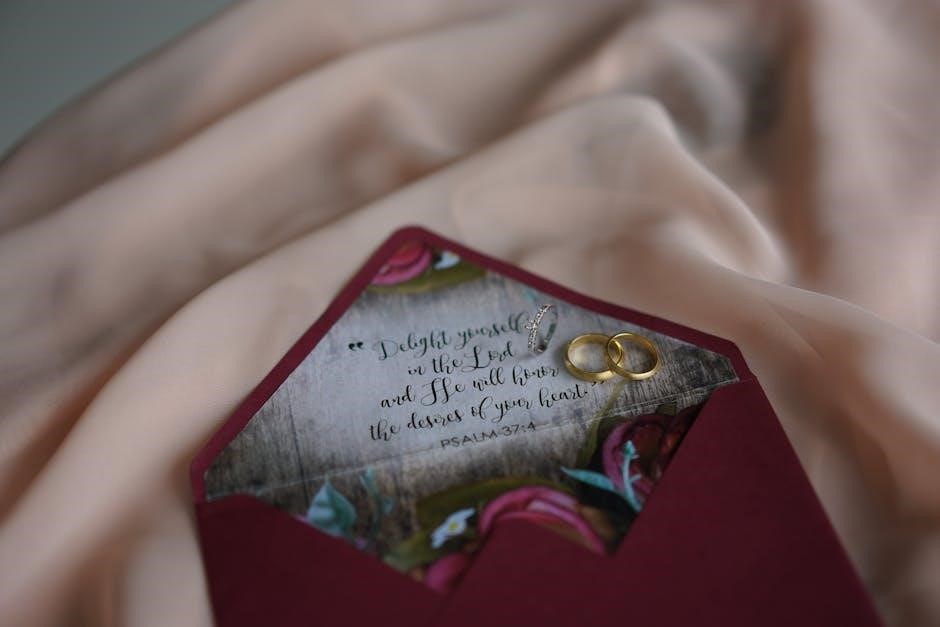Welcome to your ultimate guide to navigating the epic world of Middle-earth on screen! This guide offers a comprehensive overview of The Lord of the Rings films and related media, helping you explore the cinematic journey from the Shire to Mordor and beyond, including upcoming movies.
Chronological Order of Films and TV Series
To fully immerse yourself in the vast history of Middle-earth, watching the films and TV series in chronological order is ideal. This approach allows you to witness the unfolding of events as they occurred in Tolkien’s timeline, providing a deeper understanding of the characters, their motivations, and the intricate relationships that shape the world. Begin your journey with:
- The Lord of the Rings: The Rings of Power (TV Series, 2022-Present): Set thousands of years before The Hobbit and The Lord of the Rings, this series explores the Second Age of Middle-earth, showcasing the rise of Sauron, the forging of the Rings of Power, and the last alliance of Elves and Men.
- The Hobbit: An Unexpected Journey (2012): Follow Bilbo Baggins’s initial adventure with Gandalf and Thorin’s company.
- The Hobbit: The Desolation of Smaug (2013): Continue Bilbo’s journey as they confront the dragon Smaug and face growing dangers.
- The Hobbit: The Battle of the Five Armies (2014): Witness the epic battle for Erebor and the conclusion of Bilbo’s adventure.
- The Lord of the Rings: The Fellowship of the Ring (2001): Begin the quest to destroy the One Ring with Frodo Baggins and the Fellowship.
- The Lord of the Rings: The Two Towers (2002): Follow the fractured Fellowship as they face perilous battles and rally allies.
- The Lord of the Rings: The Return of the King (2003): Conclude the epic saga with the final battle against Sauron and the crowning of Aragorn.

This order ensures you experience the story as it unfolded historically within Middle-earth.
Release Order of Films
For many, experiencing The Lord of the Rings films in the order they were released offers a unique and nostalgic journey. This method allows you to appreciate the evolution of Peter Jackson’s vision and the impact the films had on audiences as they were unveiled. The release order is as follows:
- The Lord of the Rings: The Fellowship of the Ring (2001): The film that started it all, introducing audiences to the world of Middle-earth and the Fellowship’s quest.
- The Lord of the Rings: The Two Towers (2002): The story continues as the Fellowship splinters and Middle-earth descends further into war.
- The Lord of the Rings: The Return of the King (2003): The epic conclusion to the trilogy, culminating in the final battle against Sauron.
- The Hobbit: An Unexpected Journey (2012): A decade later, audiences returned to Middle-earth with the first installment of The Hobbit trilogy.
- The Hobbit: The Desolation of Smaug (2013): Bilbo and the dwarves continue their quest to reclaim Erebor, facing the dragon Smaug.
- The Hobbit: The Battle of the Five Armies (2014): The final battle for Erebor ensues, bringing The Hobbit trilogy to a close.

This order provides a sense of discovery and allows you to witness the progression of filmmaking techniques and visual effects as they evolved over the years. It is a great way to experience the films as many fans did when they first premiered.
The Lord of the Rings Trilogy Overview
Peter Jackson’s The Lord of the Rings trilogy is a cinematic masterpiece that brought J.R.R. Tolkien’s beloved fantasy world to life with stunning visuals and compelling storytelling. Comprising The Fellowship of the Ring, The Two Towers, and The Return of the King, the trilogy follows the perilous journey of Frodo Baggins, a hobbit tasked with destroying the One Ring, an artifact of immense power sought by the Dark Lord Sauron.
The Fellowship of the Ring introduces the main characters and sets the stage for the epic quest. The Two Towers delves deeper into the growing conflict, showcasing the battles at Helm’s Deep and the fracturing of the Fellowship. The Return of the King culminates in the final confrontation between good and evil, with the fate of Middle-earth hanging in the balance.
The trilogy is renowned for its breathtaking landscapes, memorable characters, and epic battle sequences. It captured the hearts of audiences worldwide and garnered critical acclaim, solidifying its place as a landmark achievement in filmmaking. The films’ visual effects, musical score, and faithful adaptation of Tolkien’s work contributed to their enduring legacy, making them a must-watch for any fantasy enthusiast.
The Hobbit Trilogy Overview
Peter Jackson returned to Middle-earth to direct The Hobbit trilogy, a prequel to The Lord of the Rings, based on Tolkien’s earlier novel. The trilogy consists of An Unexpected Journey, The Desolation of Smaug, and The Battle of the Five Armies, recounting Bilbo Baggins’ adventure with a company of dwarves to reclaim their homeland, Erebor, from the dragon Smaug.
An Unexpected Journey introduces Bilbo and his reluctant participation in the dwarves’ quest. The Desolation of Smaug sees the company facing perilous encounters with spiders, wood-elves, and the formidable dragon. The Battle of the Five Armies culminates in an epic battle for Erebor, pitting dwarves, elves, men, and eagles against goblins and wargs.
While the trilogy expands upon the relatively shorter novel, it offers a visually stunning journey through Middle-earth. It delves deeper into the backstory of characters like Gandalf and Legolas. Though the trilogy received mixed reviews compared to The Lord of the Rings, it remains a worthwhile watch for fans seeking to immerse themselves further in Tolkien’s world.
“The Rings of Power” TV Series
The Lord of the Rings: The Rings of Power is a television series set thousands of years before the events of The Hobbit and The Lord of the Rings. Produced by Amazon Studios, the series explores the major events of Middle-earth’s Second Age. This includes the forging of the Rings of Power, the rise of Sauron, and the Last Alliance of Elves and Men.
The series features a sprawling ensemble cast. It depicts younger versions of iconic characters. Galadriel and Elrond are two major characters. It introduces new characters and expands on lore. The series aims to capture the grandeur and scope of Tolkien’s world. It delves into complex themes of power, ambition, and the fight against evil.
The Rings of Power has been praised for its visual spectacle, ambitious storytelling, and diverse cast. Some have criticized its deviations from established Tolkien lore. Despite the debates, the series has sparked renewed interest in Middle-earth. It offers a fresh perspective on familiar stories. Season 2 is highly anticipated. It promises to delve deeper into the mysteries and conflicts of the Second Age.
Upcoming Lord of the Rings Movies
The world of Middle-earth is set to expand further on the big screen with several new Lord of the Rings movies in development. Warner Bros. has announced plans for multiple films adapted from J.R.R. Tolkien’s extensive writings, promising to explore new stories and characters within the beloved fantasy universe.
One of the most anticipated projects is The Lord of the Rings: The War of the Rohirrim, an animated film set to release in December 2024. This movie will delve into the history of Rohan. It focuses on Helm Hammerhand, a legendary king. It will explore the events surrounding Helm’s Deep.

Beyond The War of the Rohirrim, details about other upcoming films remain scarce. However, the studio has expressed interest in adapting other tales from Tolkien’s appendices and unexplored corners of Middle-earth. This could potentially include stories from the Silmarillion or focus on different regions and characters not yet seen in the existing movies. Fans eagerly await further announcements. These announcements will reveal the future direction of the franchise. These movies will ensure that the legendarium lives on.
Differences Between Books and Movies
Peter Jackson’s The Lord of the Rings trilogy is celebrated for its cinematic adaptation of J.R.R. Tolkien’s epic novels. However, like any adaptation, certain changes were made in the transition from page to screen. These differences range from minor alterations to significant plot and character revisions. These changes were implemented for pacing, visual appeal, and streamlining the narrative for a wider audience;
One notable change is the condensation of the timeline. Events that unfold over years in the books are compressed into a shorter period in the films. This alteration maintains momentum. It also prevents the story from feeling sluggish. Characters’ roles are also sometimes combined or altered. For example, the character of Glorfindel is replaced by Arwen in the rescue of Frodo. This gives Arwen a more prominent role.
Furthermore, some subplots and characters are omitted entirely. Tom Bombadil, a mysterious and powerful figure in the books, does not appear in the films. Despite these differences, the core themes and spirit of Tolkien’s work remain intact. The movies capture the essence of the story. They deliver a visually stunning and emotionally resonant experience.
Impact and Legacy of the Films
The Lord of the Rings film trilogy, directed by Peter Jackson, has left an indelible mark on cinema and popular culture. Its groundbreaking visual effects, immersive storytelling, and faithful adaptation of Tolkien’s beloved novels have set a new standard for fantasy films. The trilogy’s success paved the way for other large-scale fantasy adaptations, influencing everything from filmmaking techniques to production design.
Beyond its technical achievements, the trilogy resonated deeply with audiences worldwide, solidifying its place in cinematic history. Its themes of courage, friendship, and the triumph of good over evil continue to inspire and captivate viewers of all ages. The films also revitalized interest in Tolkien’s books, introducing a new generation to the wonders of Middle-earth.
The impact extends beyond the screen, influencing art, music, and gaming. The landscapes of New Zealand, where the films were shot, became synonymous with Middle-earth. They drew tourists from around the globe. The trilogy’s cultural significance is undeniable, cementing its status as a cinematic masterpiece. The films stand as a testament to the power of storytelling. They demonstrate the enduring appeal of Tolkien’s fantasy world.
Where to Watch the Films
For those eager to embark on or revisit the journey through Middle-earth, The Lord of the Rings and The Hobbit trilogies are readily available across various platforms. Streaming services offer convenient access to these cinematic adventures, allowing viewers to immerse themselves in the epic tales from the comfort of their homes.
Major streaming platforms frequently feature The Lord of the Rings and The Hobbit trilogies, often as part of their subscription libraries. Availability may vary depending on your region, so it’s always a good idea to check your local streaming options.

For those who prefer to own physical copies, the films are widely available on DVD, Blu-ray, and 4K UHD. Special editions and box sets offer enhanced viewing experiences with bonus content and behind-the-scenes features. Purchasing the films ensures permanent access to these cinematic treasures.
Additionally, keep an eye out for theatrical screenings of The Lord of the Rings, as occasional rereleases offer the chance to experience the films on the big screen.
With multiple options available, accessing the world of Middle-earth has never been easier. Enjoy your cinematic adventure!
Behind-the-Scenes of Filming Locations
The Lord of the Rings trilogy is celebrated not only for its captivating storytelling and characters but also for its breathtaking visuals and immersive landscapes. Much of the trilogy was filmed on location in New Zealand, whose diverse terrain provided the perfect backdrop for Middle-earth.
The rolling hills of the Shire were brought to life in Matamata, where Hobbiton was constructed as a permanent set. Visitors can now tour Hobbiton, experiencing the charm of the hobbits’ village firsthand.
The dramatic mountains and vast plains of the South Island served as the backdrop for many of the films’ epic scenes. Locations like Queenstown and Fiordland National Park provided the rugged landscapes of Rohan and Mordor.
The production team went to great lengths to capture the beauty and grandeur of New Zealand, utilizing both practical effects and CGI to enhance the natural scenery. The result is a visual feast that transports viewers to another world.
Many of the filming locations are accessible to tourists, allowing fans to immerse themselves in the world of Middle-earth. Guided tours offer insights into the filming process and the history of the locations.
Complete Film Changes List
Adapting J.R.R. Tolkien’s monumental work for the screen inevitably involved making changes to the source material. While Peter Jackson’s Lord of the Rings trilogy is largely faithful to the books, some alterations were necessary for pacing, narrative clarity, and cinematic appeal.
One significant change is the condensing of the timeline. Events that unfold over years in the books are compressed into a shorter period in the films to maintain momentum. The journey to Rivendell is expedited.
Character arcs were also modified. Some characters were omitted or combined, while others were given expanded roles. Tom Bombadil was cut entirely. Arwen’s role was amplified.
Certain plot points were altered for dramatic effect. The circumstances surrounding Frodo’s acquisition of Sting differ. The scouring of the Shire is absent from the theatrical releases.
These changes have been the subject of debate among fans, with some praising the adaptations for their accessibility and others criticizing them for sacrificing key elements of Tolkien’s vision. Nonetheless, the films remain a beloved interpretation of a literary classic.
This section will provide a detailed list of differences between the books and the movies.
The War of the Rohirrim (2024)
Set to expand the cinematic universe of Middle-earth, The Lord of the Rings: The War of the Rohirrim is an upcoming animated film directed by Kenji Kamiyama. This new installment delves into the history of Rohan, exploring events that predate the familiar narrative of The Lord of the Rings trilogy.
The film focuses on Helm Hammerhand, the legendary King of Rohan, and the epic battle that took place at Helm’s Deep. The story promises to reveal the struggles and triumphs of the Rohirrim people as they defend their land against formidable foes.
Brian Cox lends his voice to Helm Hammerhand, bringing gravitas to the role of the iconic king. The screenplay is crafted by Jeffrey Addiss, Will Matthews, and Phoebe Gittins, ensuring a compelling narrative.
The War of the Rohirrim offers a fresh perspective on Middle-earth, providing insights into the rich lore and history that Tolkien created. It promises to be a visually stunning and emotionally resonant addition to the franchise, appealing to both longtime fans and newcomers alike. The film is scheduled for release in December 2024. It will fit nicely in Maxs streaming catalog.
